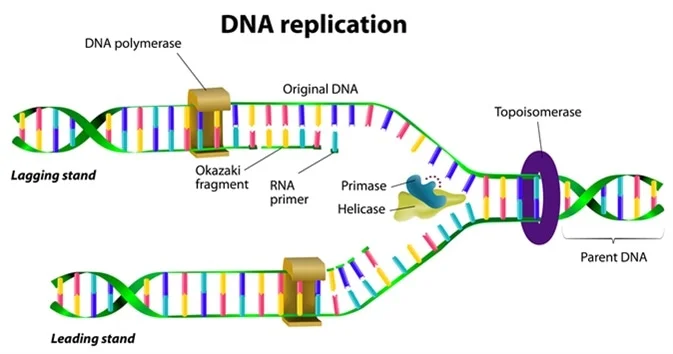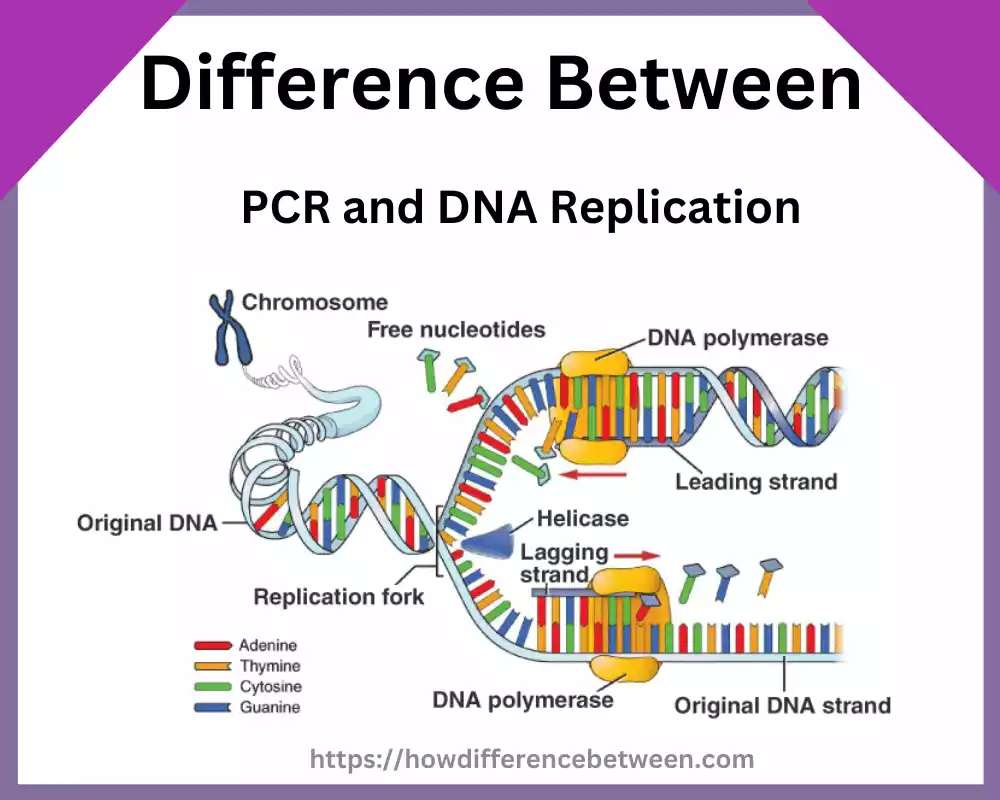PCR and DNA Replication, These processes, while distinct in their mechanisms and purposes, play interconnected roles in unraveling the mysteries of genetic information and inheritance.
Polymerase Chain Reaction, commonly referred to as PCR, is a groundbreaking technique that has revolutionized the way we analyze and manipulate DNA. It allows us to make countless copies of a specific DNA segment, paving the way for advances in fields such as medical diagnostics, forensic analysis, and genetic research.
On the other hand, DNA replication serves as a natural phenomenon that underpins the perpetuation of genetic information from one generation to the next. It ensures that each cell created during cell division receives an accurate copy of the organism’s genetic blueprint, thereby preserving its identity and functions.
As we delve deeper into the intricate details of these processes, we embark on a journey to uncover the intricate dance between PCR and DNA replication. From the laboratory to the cell nucleus, these processes intertwine to shape our understanding of life’s most fundamental aspects. In this article, we will explore both PCR and DNA replication, shedding light on their significance, mechanisms, and real-world applications. Join us as we unravel the threads of genetic inheritance and discovery.
What is PCR?
PCR stands for Polymerase Chain Reaction. It is a powerful and revolutionary laboratory technique used in molecular biology to amplify or make many copies of a specific segment of DNA. This process allows researchers to create a large quantity of DNA from a small initial sample, making it easier to study and analyze.

PCR has a wide range of applications, including genetic research, disease diagnosis, forensic analysis, and more. It has significantly advanced our ability to study and manipulate DNA, contributing to various scientific and medical breakthroughs.
What is DNA Replication?
DNA replication is a fundamental biological process that occurs within cells to ensure the accurate duplication of an organism’s genetic information. It is a crucial step in cell division, enabling the transmission of genetic material from one generation of cells to the next. During DNA replication, the double-stranded DNA molecule unwinds, and each strand serves as a template for the synthesis of a new complementary strand.

The process begins with the separation of the DNA strands, facilitated by various enzymes. These separated strands then serve as templates for the synthesis of new strands, following the base-pairing rules where adenine (A) pairs with thymine (T) and cytosine (C) pairs with guanine (G). Enzymes called DNA polymerases catalyze the addition of new nucleotides to the growing strands, ensuring the faithful replication of the original DNA sequence.
DNA replication is an essential mechanism for maintaining genetic continuity and integrity. It ensures that each newly formed cell receives an accurate copy of the genetic instructions needed for proper functioning and development. Errors or mutations in the replication process can lead to genetic disorders or diseases, underscoring the importance of its precise execution.
Differences Between PCR and DNA Replication
PCR (Polymerase Chain Reaction) and DNA replication are two distinct processes in the realm of molecular biology, each serving unique purposes and carrying out specific functions.
Here are the key differences between PCR and DNA replication:
- Purpose and Context:
- PCR: PCR is a laboratory technique used to amplify specific segments of DNA. It is commonly employed for applications such as DNA analysis, genetic research, diagnostics, and forensics.
- DNA Replication: DNA replication is a natural cellular process that occurs during cell division. It ensures the accurate duplication of an organism’s entire genome, allowing for the inheritance of genetic information by daughter cells.
- Initiation:
- PCR: PCR requires an initial DNA template, primers (short DNA sequences that mark the start of replication), DNA polymerase enzymes, and nucleotides to create multiple copies of a specific DNA segment.
- DNA Replication: DNA replication is initiated at specific sites called origins of replication. Enzymes and proteins coordinate to unwind the DNA double helix and initiate the replication process.
- Enzymes Involved:
- PCR: DNA polymerase enzymes, such as Taq polymerase, are used to synthesize new DNA strands during PCR.
- DNA Replication: Multiple enzymes, including DNA helicase, DNA polymerase, and DNA ligase, are involved in different stages of DNA replication.
- Temperature Cycling:
- PCR: PCR involves a series of temperature-mediated cycles to denature DNA, anneal primers, and extend new DNA strands.
- DNA Replication: DNA replication occurs at a relatively constant temperature within the cellular environment.
- End Products:
- PCR: The end product of PCR is an amplified segment of DNA, yielding multiple identical copies of the target sequence.
- DNA Replication: The end products of DNA replication are two identical DNA molecules, each containing one original strand and one newly synthesized strand.
- Occurrence:
- PCR: PCR is a laboratory technique that is not naturally occurring and is performed in controlled settings.
- DNA Replication: DNA replication is a fundamental biological process that occurs naturally within cells as part of cell division.
- Applications:
- PCR: PCR is widely used in various applications, including DNA sequencing, genetic testing, cloning, and studying gene expression.
- DNA Replication: DNA replication is essential for cell division, growth, repair, and maintaining genetic continuity.
PCR is a laboratory method used to amplify specific DNA segments, while DNA replication is a natural cellular process that duplicates an organism’s entire genome. Both processes have distinct purposes and mechanisms, contributing to our understanding of genetics and enabling various scientific and practical advancements.
Similarities Between PCR and DNA Replication
PCR (Polymerase Chain Reaction) and DNA replication, while distinct processes, share several fundamental similarities that contribute to our understanding of genetic information and manipulation.
Here are the key similarities between PCR and DNA replication:
- DNA Polymerase: Both PCR and DNA replication involve the use of DNA polymerase enzymes. In PCR, DNA polymerase synthesizes new DNA strands by adding complementary nucleotides to a DNA template. In DNA replication, DNA polymerase is also responsible for adding nucleotides to the growing DNA strands during the duplication process.
- Template-Driven Synthesis: In both processes, the synthesis of new DNA strands is template-driven. In PCR, a DNA template is used to guide the synthesis of complementary DNA strands. In DNA replication, the original DNA strands serve as templates for the creation of new complementary strands.
- Base Pairing Rules: Both PCR and DNA replication adhere to the base pairing rules of DNA. Adenine (A) pairs with thymine (T), and cytosine (C) pairs with guanine (G) through hydrogen bonding. This ensures the accurate replication and synthesis of DNA strands in both processes.
- Amplification: Both PCR and DNA replication involve the amplification of DNA. In PCR, a specific DNA segment is amplified to generate multiple copies. In DNA replication, the entire genome is replicated to produce two identical DNA molecules, each with an original and a newly synthesized strand.
- Enzymatic Activities: Enzymes play a vital role in both processes. In addition to DNA polymerase, various enzymes are involved in unwinding the DNA double helix, initiating replication or amplification, and ensuring the accuracy of the processes.
- Temperature Control: While the temperature control in PCR serves specific purposes for denaturation, annealing, and extension steps, temperature regulation is also critical in DNA replication to maintain the stability of DNA strands and support enzyme activities.
- Primer Utilization: Both processes require the use of primers. In PCR, primers are short DNA sequences that mark the start of DNA amplification. In DNA replication, primers are also essential for providing a starting point for DNA synthesis on the lagging strand.
- Genetic Information Preservation: Both PCR and DNA replication contribute to the preservation and transmission of genetic information. PCR enables the study and manipulation of specific DNA sequences, while DNA replication ensures that accurate genetic copies are passed on to daughter cells during cell division.
While PCR and DNA replication have distinct purposes and occur under different contexts, they share underlying principles and mechanisms rooted in the structure and function of DNA. These similarities highlight the interconnectedness of molecular processes that govern genetic information and its applications in various fields of science and medicine.
Conclusion
PCR and DNA replication stand as pillars of knowledge. DNA replication faithfully propagates life, while PCR magnifies genetic insights. Together, they empower scientific breakthroughs, medical advancements, and a deeper understanding of life’s intricacies. As we unravel the mysteries of genetics, PCR and DNA replication illuminate the path to discovery.































